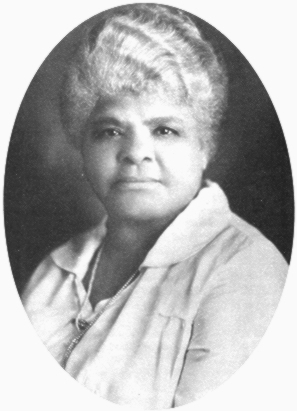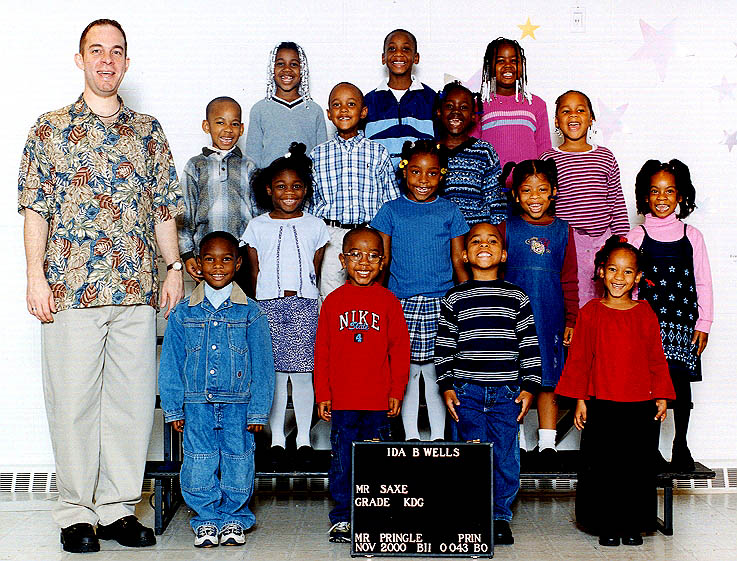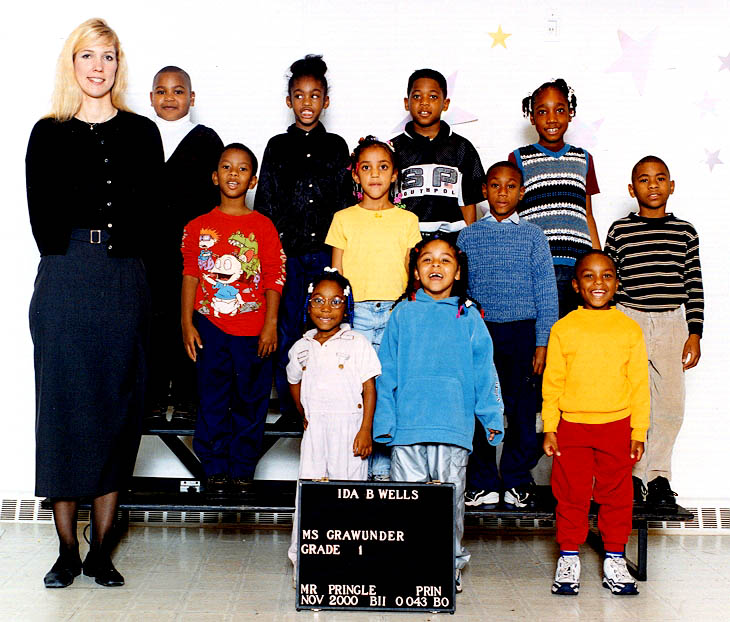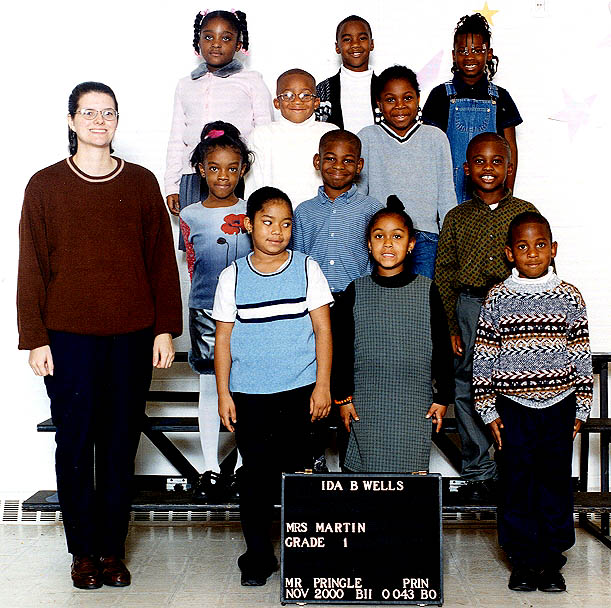
Ida B. Wells-Barnett
The Ida B. Wells Community Academy
COUNTY:
Summit
IRN: 133553 Part I: Annual Report for 2000–2001
The Academy was chartered by the State Department of Education on May 4, 1999, and opened on August 30, 1999 as an independent, nonsectarian and public Community School in Akron, Ohio. It was incorporated as the Ida B. Wells Community Academy, Inc., a nonprofit corporation, on December 29, 1998. The Academy’s Learning Center for fiscal year 1999-2000 was located at 1104 Johnston Street, Akron, Ohio 44305-2414 (330.535.5130). Its Administrative Offices were at 395 East Tallmadge Avenue, Akron, Ohio 44310-2352 (330.376.4915). The Academy moved on August 11, 2000. The Academy’s Learning Center and administrative offices are now located at 670 Wooster Avenue, Akron, Ohio 44307-1868, where it is hosted by Antioch Baptist Church. In this facility the Academy enjoys enough space to adequately house its full academic program. The original telephone numbers remained unchanged – Learning Center: 330.376.4915 and FAX: 330.376.4912. A separate phone number for the Administration was added: 330.761.1484. There are, however, some minor disabilities which will be discussed in a later section of this Annual Report (see p. 18). The Internal Revenue Service granted the Academy tax exempt status under section 501(c)(3) on May 19, 2000.
The Academy’s Educational Mission The Academy’s mission is to educate young people in a year-round educational program. Over the duration of its first 5-year contract, it will educate children in grades K to 6 using a holistic educational program that is personalized, problem-posing and problem-solving, centered in the humanities, natural sciences, language arts, social studies (civics), the performing and graphic arts and African American and world culture studies. This mission is buttressed where possible with electronic technology and emphasizes the establishment of a Learning Community designed to enhance its students’ academic competency (proficiency, if you will) and the reuniting of traditional subject areas and learning activities so that students are better able to understand the relationship of one subject area to another and education to their present and future lives. We again invite the reader to study Professor Sowande’s “Paradigm of Curricular Holism, ” Rossi and Gilmartin’s “Conceptual Framework of Youth Development and Educational Performance” and Dan Aldridge’s “Circles of Continuing Development,” see Appendices I, II and III.
The Academy was founded to serve low- and medium income African American, White, Native American, and Latino American students. In short, the Academy was (is) open to all school-aged youth residing within the Akron public school district and its surrounding metropolitan areas. The Academy, moreover, addresses its curriculum and educational services to the needs of underachieving and underrepresented youths throughout the state. With the passage of HB 282, the Academy was afforded the opportunity to enroll students, who reside outside the Akron School District, through an "Interdistrict Transfer Program." Interdistrict transfers are NOT to be transported. These students parents have to arrange for their transportation. At the close of the Academy’s first academic year, we convened a Board Retreat led by Mr. Richard Lewis of Case Western Reserve University’s Mandel. Of specific interest at this retreat were the Academy’s organizational structure as devised by its Governing Board and its educational plan, specifically its superintendent’s measured reluctance to define the Academy as an African-centered institution.
Educational Philosophy The Academy provides an education that was nurturing, intellectually stimulating and redoubled its intention to imbue in its students intellectual curiosity, a mutual respect for learning proficiency, academic competence and the attainment of knowledge of their history, culture, traditions and values. Students learned to better appreciate themselves, their fellow students, their families, and their community. Most importantly, the Academy continued its drive to establish a Learning Community and environment that was supported by a curriculum reliant in part on the learners' life experiences at home, in their neighborhood, and in the society. Furthermore, the Aca-demy’s programming structure was altered to produce measurable performance outcomes in reading, writing, mathematics, social studies and the natural sciences. The Academy decided to introduce learning objectives and commensurate activities that would be based on individual student interests, needs and abilities and that would allow students to grow at their own pace and, in turn, allow faculty to sharpen their methods for inducing higher achievement expectations for themselves and their students. Based on these objectives, the Academy’s leadership has developed during the 2000-2001 academic year a curricular delivery system predicated on student ability groupings and individual faculty teaching preferences. That is, now students were assessed at the beginning of the school year to determine where they were academically. The faculty no longer worked with students exclusively in terms of their grade levels or age sets. A child designated as a third grader would no longer mean that he or she would only receive instruction based on third grade material. The Academy’s faculty have learned through their ability assessment strategy, that many of their students were able to do higher grade level work. Conversely, it was also discovered that some third graders were actually only able to successfully do lower grade level work. Upon realizing this, the faculty then decided to redesign the typical school day in order to allow for an innovative way of taking full advantage of the individual learning potentials of their students or groups of students. Now students get to learn from variety of faculty teach-ing a various subjects to various ability groups during the course of a learning day. This practice gives rise to a true learning community, for now faculty perform as a teaching team not only in a particular class, but rather throughout the Academy.
In addition to this curricular innovation on the part of the faculty was their decision to follow through with a determination arrived at just before the end of the 1999-2000 academic year. The faculty, looking at how it would proceed in the ensuing academic year, thought it would be to their students’ and their advantage were they to “Loop” [1] with their students, that is, the faculty would follow their students to the next higher grade level at the close of the academic year. The faculty, even though some would not be around for 2000-2001, academy year, had correctly seen that their ability to further the learning of their students would be greatly accelerated. For looping with their students to a higher grade level, they would be familiar with their students’ abilities and disabilities and could, there-fore, use that familiarity to move their students’ curricular competence ever upward and onward. An impor- tant outcome of these innovations would ultimately lead to the principal, business manager and the superintendent stressing to all staff that were indeed members of a learning team inside the classroom and without. This was particularly so in the several ability groups the faculty established and subsequently taught. The Academy's adjusted educational philosophy and curricular emphases were perfect additions to its program structure and instructional design. Ability grouping and teachers moving with their students to higher grade levels made essential programmatic mandates more realizable:
 Third Grade Class – Instructor: Ms. Doris Doughty “Educational Assessment and Accountability in All Academic Endeavors” became an Academy mantra. It is to be stressed at all administrative, parent/community and faculty meetings. The Academy regularly (every six weeks) assesses teacher performance, learning obstacles, student rights and responsibilities, student, parental, community and home resources and involvement. The Academy assesses itself and reports regularly to parents how the overall curri-cular program and educational process is progressing as well as how well students are performing based on national, state and city norms, if available. Curricular Focus The Academy's personalized educational program, curricular structure and delivery system are major program elements. This educational program was buttressed very successfully by Scholastics Literacy Place, Everyday Mathematics (University of Chicago) and the Scots-Foresman Science Program (McGraw-Hill) and a number of other commercial curricular programs on compact disks. Its emphasis is on high academic expectations, moral and social responsibility, and increased proficiency test scores helped influence parents to continue the enrollment of their child(ren) in larger numbers; however, not large enough to meet our enrollment projections set in 1999. Furthermore, the Academy stressed the involvement of parents in meaningful activities throughout the Academy's startup and operational phases. These activities included teaching, administrative and governance functions, and commit-tee assignments of various sorts, e.g., discipline, curriculum, admission, and faculty hiring. It should be noted here; however, that we were not as successful in this arena as we had hoped to be. More parental and community involvement is desired. The Academy's decision to maintain a low 15:1 student to teacher ratio strengthened its efforts to increase these students’ educational performance while at the same time diversifying educational content. The Academy's intent is to serve students from K-6. In its first year, which began on August 30, 1999, the Academy enrolled only students in Kindergarten through the 2nd grade, adding one grade per year during its initial five years of operation. In 2000-2001 the Academy added the 3rd grade. During 1999-2000, the number of students the Academy served was limited. The lessor of the Academy’s startup facility wanted not to allow more than 45 students; 15 students fewer than the contracted number. The superintendent compromised and determined that the Academy would still have a critical mass of students were it to enroll no fewer than 50. To enroll fewer would have resulted in a short-fall of funds too great to remain fiscally solvent. In 2000-2001 the number of students enrolled increased to 77 students. During both the 1999-2000 and the 2000-2001 enrollment periods, when these available places are unfilled, students were to be selected for admission by lot from our waiting list. As it turned out, given the low number of students on the list, we had to admit all students on the waiting list. Enrollment preference, however, was given to continuing Academy students and their siblings. For the five-year contract period (1999-2004), the Academy originally projected enrolling students according to the following schedule:
We have not been able to meet these enrollment projections during our first two years as a result of insufficient classroom space on the one hand and a faulty recruitment strategy on the other. To alleviate this enrollment shortfall, we initiated discussions with construction companies and financial institutions in search of possible ways to construct a larger facility. We were unsuccessful. Nevertheless, even with limited space constraints, the admini-stration, the principal and his faculty were able to effect a well rounded academic program with the faculty and staff on hand to deliver it. The Academy's instructional philosophy and program structure were able to maintain curricular and operational flexibility (see Attachment III: “Circles of Continuing Development”). [2] The Academy's curricular focus followed the standard competency based school curriculum with one noteworthy exception: The Academy strived to infuse into its curriculum an emphasis on Africa, African America, Native America, Latino America and the world. These elements are vital to the correct and diversified education of its enrollees. We added to our staff a
full-time certified Special Education teacher
who went to work identifying students in need of special education
services.
The Academy also hired a certified teacher to work as our full-time
Title
I Math and Reading tutor. This highly competent and aggressive faculty
member proceeded to work with students in selected classes as well as
in
individual or group sessions. She was also determined to enhance her
professional
develop-ment by attending all those Title I workshops and seminars she
could.
END NOTES 1. "Looping," as is generally known, is the practice of advancing a teacher from one grade level to the nest along with his or her class. At the end of a "loop" of two or more years, the the teacher begins the cycle again with a new group of students. See http://www.ed.gov/databases/ERIC_Digests/ed429330.html. 2.
Dan Aldridge. (1969).
Education to Govern, A Philosophy and Program
for Learning NOW! (Detroit: Advocators), p. 47. His circular matrix
was examined by the principal, the chair of the curriculum and
assessment
committee and the superintendent. Their decision was to put the matrix
before the faculty in an in-service training session during the
2000-2001
academic year to get their response to it.
NB: The
Attachments referred to in this report may be requested from the
Webmaster via an e-mail indicating which
attachment
is wanted.
End of Part I
Dr. Edward W. Crosby, PhD, Co-Founder, Superintendent Office: 330.761.1484 or Registration:
330.376.4915
Contact the Webmaster
to Give Feedback
Click on the World and
Sign
We Are An Equal Education and Employment Opportunity Institution |






